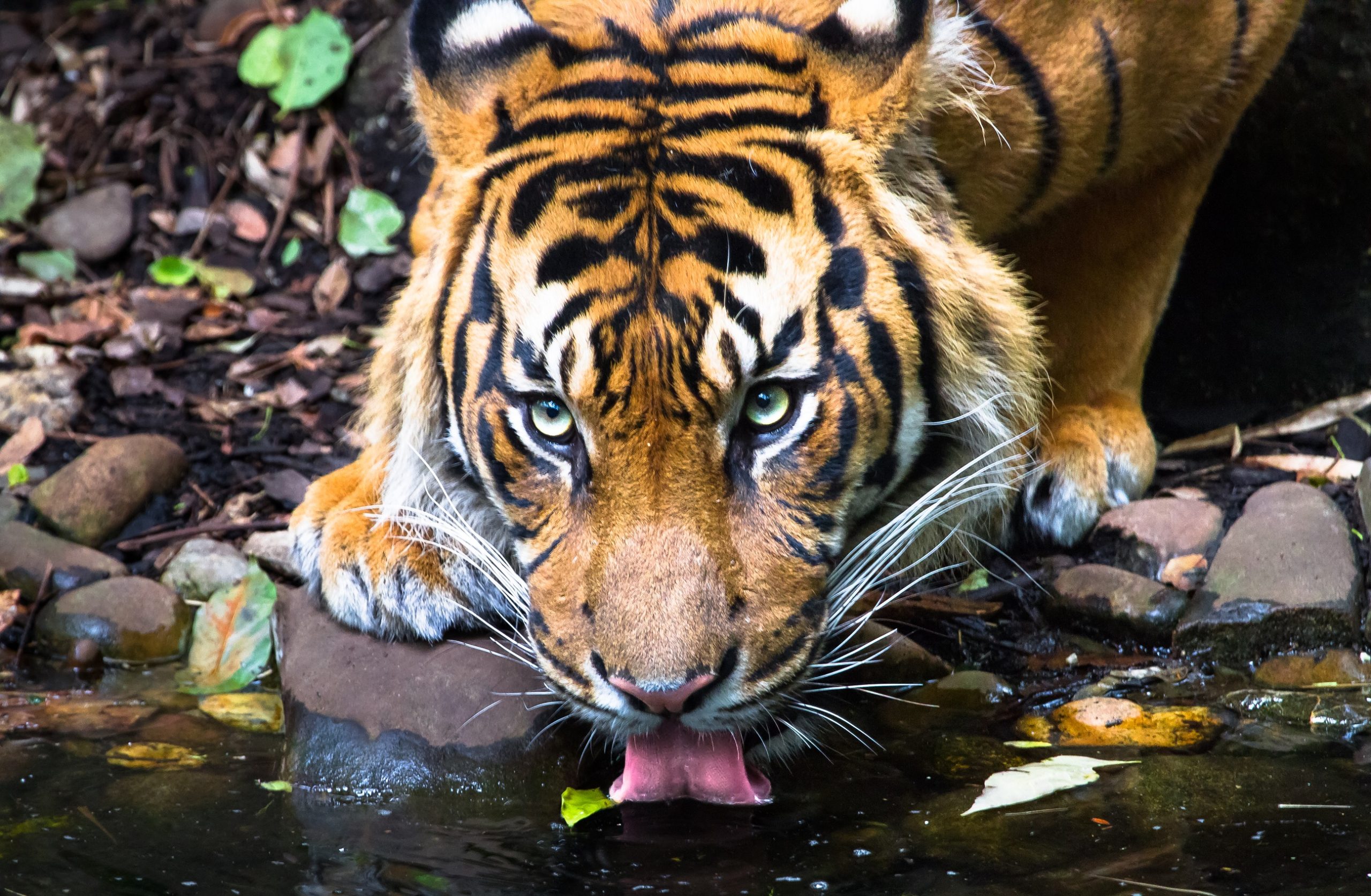
Tigers: Striped Shadows of the Wild
Tigers are among the most iconic and awe-inspiring animals on Earth. With their bold black stripes, fiery orange coats, and piercing gaze, they are both beautiful and fearsome. As the largest members of the cat family (Panthera tigris), tigers are solitary hunters, powerful predators, and symbols of strength and courage across many cultures.
Where Tigers Live
Tigers once roamed across much of Asia, from Turkey to the eastern coast of Russia. Today, their range has been dramatically reduced, with wild populations found in fragmented forests and grasslands of countries like India, Russia, China, and Southeast Asia. Tigers prefer dense vegetation, access to water, and plenty of prey such as deer, wild pigs, and buffalo.
A Solitary Lifestyle
Unlike lions, tigers are solitary animals. They roam vast territories alone, marking their range with scent and scratch marks on trees. Each tiger needs a large area to hunt and survive, which is one reason habitat loss has hit them so hard. Male territories often overlap with several females, and cubs stay with their mother for about two years before setting off on their own.
Powerful Predators
Tigers are apex predators, capable of taking down animals much larger than themselves. Using stealth and patience, a tiger will stalk its prey, then burst from the underbrush in a surprise attack. A single powerful bite to the neck or throat usually ends the hunt. Tigers are also strong swimmers, unlike most other cats, and will readily cross rivers or even hunt in water.
Tiger Subspecies
There are six surviving subspecies of tigers, each adapted to different environments:
- Bengal tiger – Found in India and Bangladesh; the most numerous subspecies.
- Siberian tiger – Also known as the Amur tiger, it lives in cold forests of the Russian Far East.
- Indochinese tiger – Lives in Southeast Asia’s forests; smaller and more elusive.
- Malayan tiger – Native to the Malay Peninsula; critically endangered.
- South China tiger – Possibly extinct in the wild; survives in captivity.
- Sumatran tiger – The smallest tiger, found only on the Indonesian island of Sumatra.
Each of these subspecies faces unique threats but shares a common struggle: survival.
Threats to Tigers
Tigers are endangered, with fewer than 4,000 left in the wild. The biggest threats to their survival include:
- Habitat loss due to logging, agriculture, and urban development
- Poaching for body parts used in traditional medicine and as status symbols
- Human-wildlife conflict, especially as human populations expand into tiger territory
Conservation efforts are focused on protecting habitats, preventing illegal trade, and working with local communities to promote coexistence.
Why Tigers Matter
As apex predators, tigers help maintain healthy ecosystems by keeping herbivore populations in check. Their presence indicates a rich, biodiverse environment. Saving tigers means saving entire landscapes—and all the wildlife and people that depend on them.
Final Thought
Tigers are more than just majestic cats. They are powerful symbols of nature’s wild beauty and resilience. But they are also incredibly vulnerable. Without continued global support and protection, we risk losing one of the most magnificent creatures to ever walk the Earth.
More photos below ↓









Disclaimer: This blog post is for edutainment purposes only and may not be entirely accurate.






